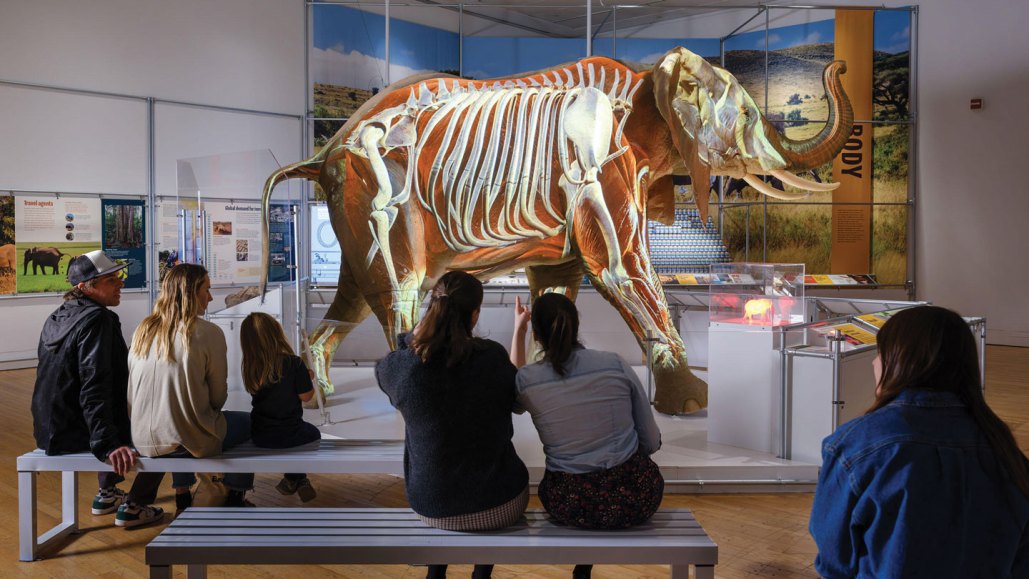Exploring the Enigmatic Realm of Elephants: A Captivating Exhibition

Over the course of millions of years, various species of proboscideans including mammoths, mastodons, and elephants thrived in vastly different environments such as the Arctic tundra and African savannas. However, around 11,700 years ago, their numbers shrank significantly due to the ending of the last ice age coupled with an increase in human hunting. Presently, only three species remain: the Asian elephant, the African forest elephant and the African savanna elephant, and all of them are now endangered.
The ongoing loss of elephants has a more profound impact than most people realize. This point is emphasized in “The Secret World of Elephants.” This exhibition at the American Museum of Natural History in New York City explores the ramifications of their loss and recent revelations about the physiology and cognition of elephants.
Elephants play a crucial role in shaping their habitats. These large herbivores consume significant amounts of food, travel considerable distances grazing and spread seeds. They also make space for various plant species by trampling fields and create large water holes that benefit other animals. According to Ross MacPhee, a mammalogist and curator at the museum, the absence of mammoths and other large herbivores in North American grasslands has led to the proliferation of slow-growing plants and invasive weeds, damaging the richness of these landscapes.
The relation between humans and elephants is also of cultural significance. Despite the size of the exhibit, it is filled with displays illustrating elephants' impact on human societies, from prehistoric cave art to religious narratives. However, this relationship has not always been advantageous for elephants as they have been exploited for warfare and entertainment purposes.
The exhibit intends to strengthen the bond between humans and elephants by highlighting their intelligence and sociability. Elephants are capable of recognizing their reflections, which shows self-awareness, and can use tools. Visitors will see videos of elephants interacting and deriving comfort from each other. An interactive panel allowing visitors to listen to different elephant calls is another highlight of the exhibit.
Much of the exhibit is dedicated to differentiating elephants from humans. Elephants have a unique sensory experience, which includes sensing ground vibrations with their feet and having a highly developed olfactory system, surpassing even dogs. They also consume an astonishing amount of food, averaging 150 kilograms daily for an adult male African elephant.
American Museum of Natural History | New York City
The research conducted on elephants is also intriguing. Testing tusks chemically shows information regarding their diet and movement, while DNA samples reveal evolutionary links between elephants and dissimilar looking animals like aardvarks and tenrecs.
Visitors of all ages will find the exhibit captivating with its rich visuals and tactile features. During my visit, I observed a group of children marveling at a life-size elephant model and touching a replica of its skin. I myself felt the texture of a fossilized mammoth tooth, appreciating its function in grinding hard grasses.
The exhibit is a mix of curiosity and concern. It warns about the impending loss of elephants before we truly understand them. The curators hope that “The Secret Lives of Elephants” will motivate visitors to help safeguard the species from extinction.
The display suggests ways to support the cause, including backing local organizations that protect elephant habitats and refraining from buying elephant ivory or other related products. Despite the illegality of the ivory trade in countries such as the United States, the European Union, and China, a robust illegal market continues to fuel extensive poaching. This has led to evolution favoring tuskless elephants.




